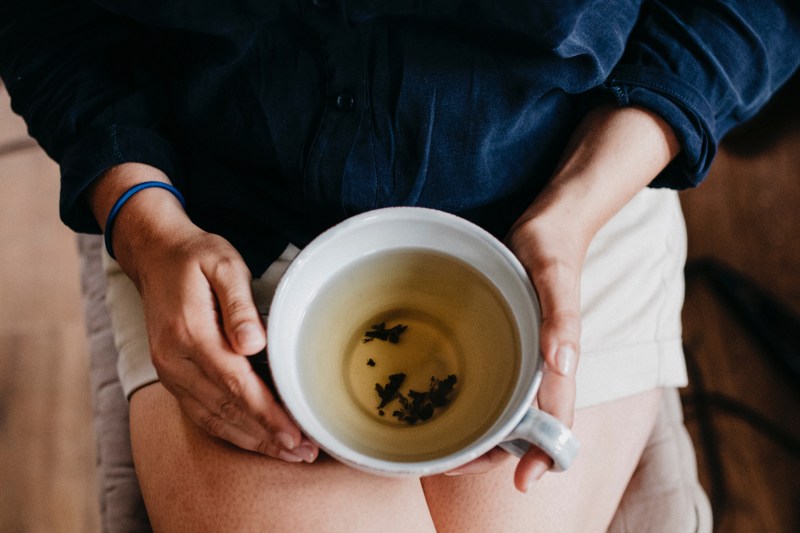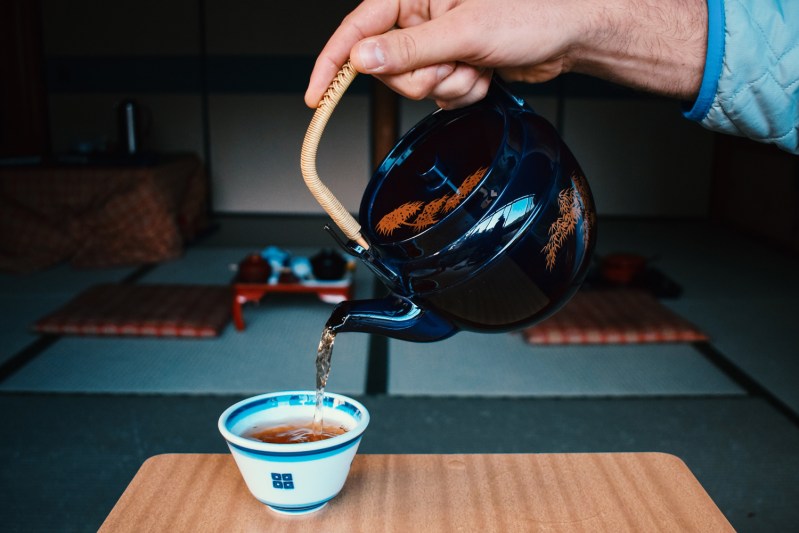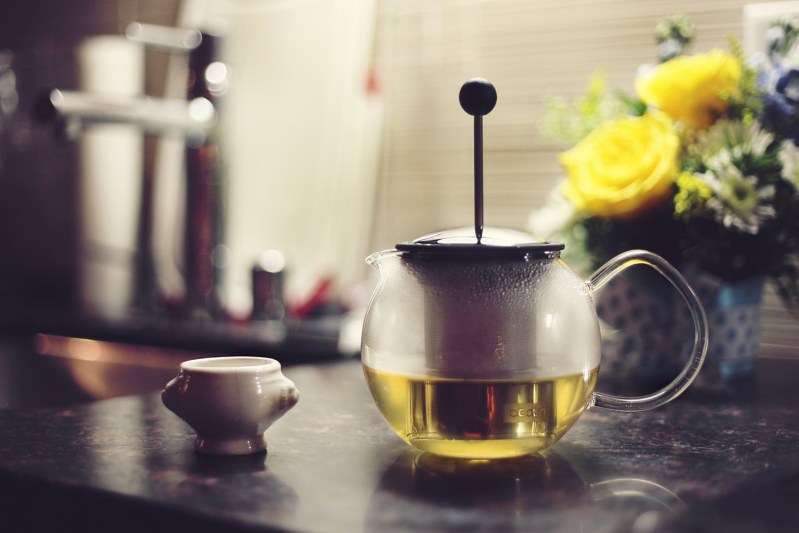Here at The Manual, we make no secret of our deep love for fine coffee. But as the weather turns moody and the days grow short, we find ourselves more inclined to indulge in the contemplative pace set by the weather than to fight it. As they say, to everything there is a season, and that includes beverages. Much as we love a good cup of French press coffee to power us through a morning commute or an afternoon scrum session, a rainy weekend afternoon with a book or a meditative hike up a mountain begs for a cup of something different. Something no less powerful, but with a more poetic soul.

That something, friends, is tea.
Long the beverage of scholars and artists, craftsmen and laborers, tea has somehow been relegated in recent years to a prissy status belying its plebeian roots. Some of our less enlightened brethren even pigeonhole it as (sorry) a woman’s drink. Leaving aside the obvious question of why that’s even a bad thing, we remind you that tea was the preferred beverage of the Beat poets such as Jack Kerouac and Gary Snyder, legendary actors such as James Dean and Sean Connery, and even of legendary rockers like Mick Jagger, Jimi Hendrix, and Ozzy Osbourne (who has gone on record as saying he “f*cking loves Yorkshire Gold”).
“There are those who love to get dirty
and fix things.
They drink coffee at dawn, beer after work,And those who stay clean,
just appreciate things.
At breakfast they have milk
and juice at night.There are those who do both,
they drink tea.”
– Gary Snyder
To get the lowdown on what we’ve been missing all this time, we spoke with Veerinder Chawla, founder and owner of Portland, Oregon’s venerable Tao of Tea. (If you’re ever in Portland, a visit to their Belmont location is a must.) Read on for his demystifying insight into how coffee lovers can get a kick out of tea, as well as his recommendations on how to dive into this intriguing world of flavor, craft, and history.
Tea for Coffee Lovers
The Manual: Are we wrong that coffee is perceived as a manly drink, while tea is … not so much?
Veerinder Chawla: It seems that that notion is common, yes. There’s a feeling that it’s not a guy’s drink. But at the same time, the number of guys that drink tea is phenomenal. We’ve seen the change over the years in our Belmont tea house. If you came in on a typical day, you’d be surprised how many guys versus women are there in the shop.
Furthermore, most of the tea in the world is grown and processed by guys. The old generational farmers in rural China or Taiwan who have done this for years, they’re chewing tobacco or betel nuts, with a cigarette in their hands. The traits that guys think make coffee a man’s drink, tea takes even further.
All it takes is for guys to taste pure, real teas and the mind changes pretty fast.

TM: For a guy who is really into coffee, what are some good teas to start developing his palate?
VC: There are a couple of categories of teas that are more hearty, robust, or “macho.”
Pu’erh teas from Southern China are the heart of how tea originated. This is a genre of teas perfect for the coffee drinker that wants something similar. Pu’erh is dark and earthy but without acidity. It’s a gateway for coffee drinkers — they find out “Wow, I never knew that tea could offer that flavor profile.”
A lot of the black tea originals — the assamica cultivar that grows in India and China — that come from single-origin estates are really well-rounded and tasty. We have a lot of people who come for assam, Darjeeling, and golden yunan teas.
Note that it’s important to distinguish real tea from herbal “teas.” People can steep peppermint, chamomile, ginger, and other herbs that way and call it “tea,” but there needs to be clarity. Tea comes from the tea plant, a very distinct plant with various cultivars.
How to Find Quality Tea
TM: What should we be looking for in a quality tea?
VC: When it comes to specialty coffee, it’s the freshness that roasters will use to distinguish themselves. They get the beans from origin, then roast the beans to their specs, take measures to keep them fresh, etc. That same standard is not being applied by many consumers of tea. Are you buying a real, whole-leaf tea? And do you ever ask yourself how fresh your tea is?

Really good black teas are made in late spring/early summer timeframe — that’s when the harvest time period is. By the time they come to the states, a month or two months later, you’re already starting to see flavor loss. So by the time winter comes around, you’ve got black tea that has been sitting around that is six months old. You ask yourself, I wonder what it tasted like when it was just a month old?
Or you could go even more simple than that. You may have had Earl Grey tea in your life, but have you asked where that black tea came from? Was that bergamot flavor the famous Sicilian bergamot, steam-distilled, or was it a synthetic flavor? There’s a discerning objectivity that the average consumer would have about their specialty coffee — they should have it about tea, as well.
How to Prepare Tea
TM: Once you’ve got the right kind of tea, what is the right way to prepare it? Do we need a lot of special gear? How exact of a science does this have to be?
VC: You don’t need to invest in a special apparatus, a filter, or pot. You can brew in any type of container. You can use a French press (just make sure to rinse it out well); you can even use an old mason jar. That’s what the average person will use in China — they’ll fill a glass jar with tea leaves and hot water, put the lid on, throw it in the briefcase and go to work.
If it’s a good tea, the leaves will sink to the bottom. If you’ve added too much leaf, the first few sips will be too strong. Just sip it down, then add more water. It’s a personal preference.

I’m one for simplicity — I think tea can be brewed any way, but I do look for a few things. The water should be good water, not chlorinated. If your water doesn’t taste good, your tea isn’t going to taste good.
Second, you can use 180-185 degree Fahrenheit water for most kinds of tea. Above 190 is too hot for tea. If you’ve got really good green tea, the lower temperature will be better for the flavor profile. When people cook broccoli or asparagus, you don’t cook them too long, or they’ll become mushy. Use that same principle for green tea leaves — you don’t want to overcook the leaves because you’ll not only draw out flavor, but also what the components of the leaf are. Dark teas you’ll want to steep just a little longer for the flavor to come out.
As a general rule, 180 is a really good temperature for most kinds of tea. If you like your beverage hotter, that’s fine. Lower temperature just means you won’t scald the leaves. It’ll be ready for you to take that good first sip faster.
Ready to fall in love with tea? Here are Veerinder’s recommendations in each category.
The Best Types of Tea for Beginners
Black Tea
Yunan is a region of China famous for black teas that have a lot of gold-tipped character to them. When Yunan tea is processed and it oxidizes, a lot of the juice dries and gives it a golden color that imbues the tea with a smooth, honey-like flavor.
Our pick: Golden Needle. Grown at lofty elevations and made with only the newly sprouted tips of the tea plant, this tea has a warm aroma of red apples and a roasted sugar sweetness that comes into its own with a kiss of cream and raw sugar.
Green Tea
Just as pinot noir is grown all over France, green tea is grown all over Japan, and each region has its own producers and its own character. Sencha and gyokuro are two different styles of green tea, with different growing techniques that result in different flavor profiles. People who like oceanic flavors along the lines of nori, oysters and sea breeze will enjoy these teas.
Our pick: Hon Gyokuro. Oceanic and faintly salty with hints of honeydew melon, this tea is great for a leisurely weekend morning, steeped for a long time at a slightly cooler than average temperature.
Oolong
This very distinct category of tea is probably the most misunderstood by non-tea drinkers. It’s not in between black and green — it’s a different universe, with hues and flavors that can go anywhere from light green with a taste of orchids or lilacs, to very dark with the flavor of cedar or roasted cacao.
Our pick: Aged Taiwanese Oolong. Created by slow-roasting the leaves every 2 to 3 years, this exceptional and intriguing tea from Mingjian has a toasty, mineral taste and a smooth, mellow body, perfect for an afternoon by a rainy window with a good book.


